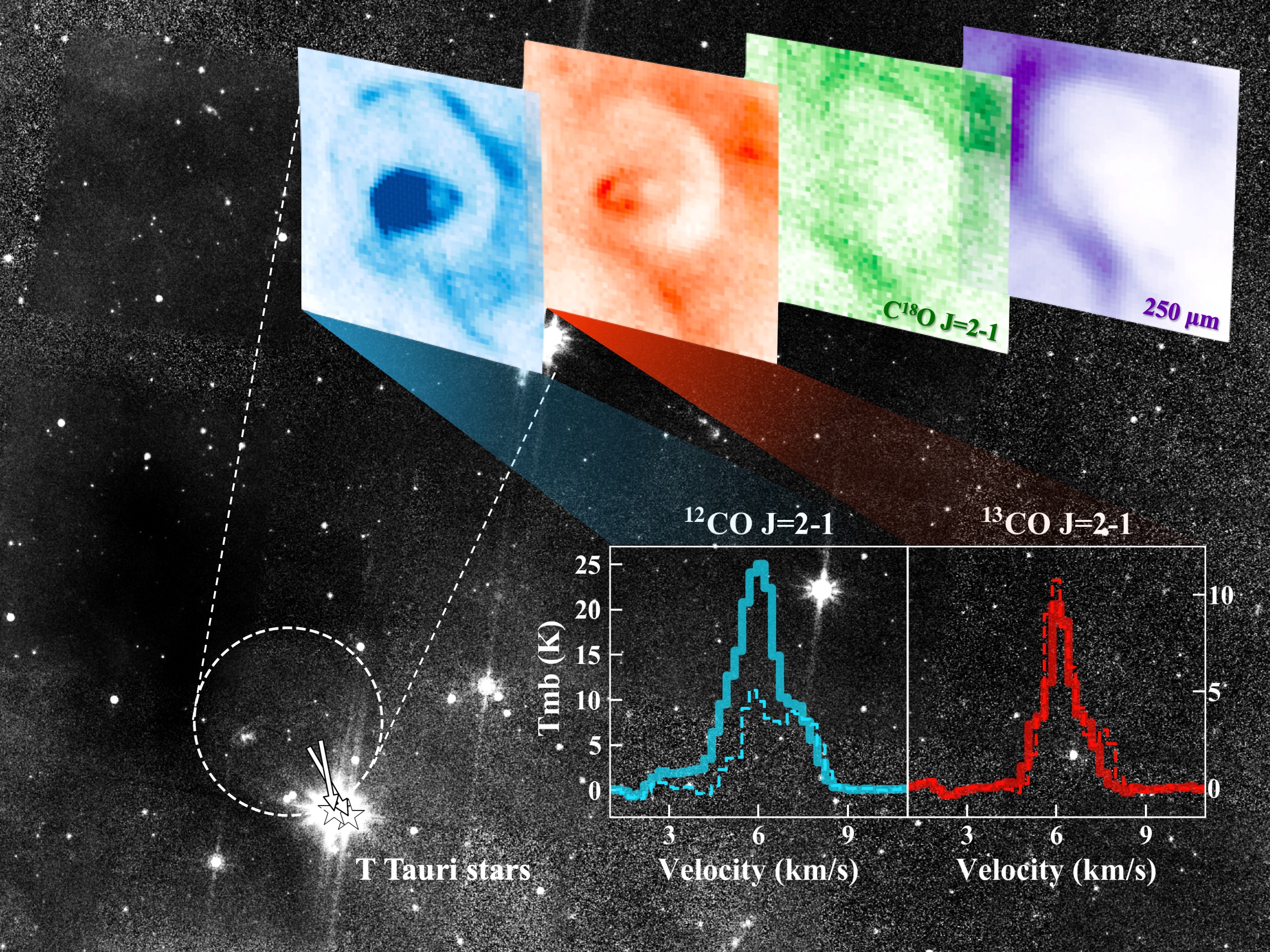The process of star formation interacts with the surrounding environment and produces observable dynamical phenomena, such as outflows and bubbles, collectively known as stellar feedbacks. As one of the primary sources of energy injection into the natal cloud, such feedbacks are critical for the evolution of interstellar medium.
An international team led by Dr. LI Di from the National Astronomical Observatories of the Chinese Academy of Sciences (NAOC) conducted carbon-monoxide emission observations in the Taurus molecular clouds using Institute for Radio Astronomy in the Millimeter Range (IRAM) 30-m telescope and James Clerk Maxwell Telescope (JCMT). They identified a new molecular bubble in the carbon monoxide signal from both telescopes.
The study was published in The Astrophysical Journal on Feb. 7.
"Through combined analysis with the Five College Radio Astronomy Observatory (FCRAO) survey of the Taurus molecular cloud, we found an outflow located at the center of the molecular bubble," said DUAN Yan, a PhD candidate from NAOC and the first author of the study.
Based on Gaia EDR3 data, the researchers suggested that a pair of T Tauri binary stars might have produced the molecular bubble 70,000 years ago. Only one similar case of a molecular bubble coexisting with an outflow (in Orion A) has been reported before.
This discovery supports the common origin of molecular bubbles and outflows. It enhances our understanding of how stellar feedback acts on molecular clouds. The detection of the bubble-outflow structure provides new observational evidence for the feedbacks of T Tauri stars to the interstellar medium.
Dr. Paul F. Goldsmith from Jet Propulsion Laboratory and Dr. Laurent Pagani from Observatoire de Paris contributed to the estimation of physical parameters and the driving-source analysis of the molecular bubble-outflow structure.







